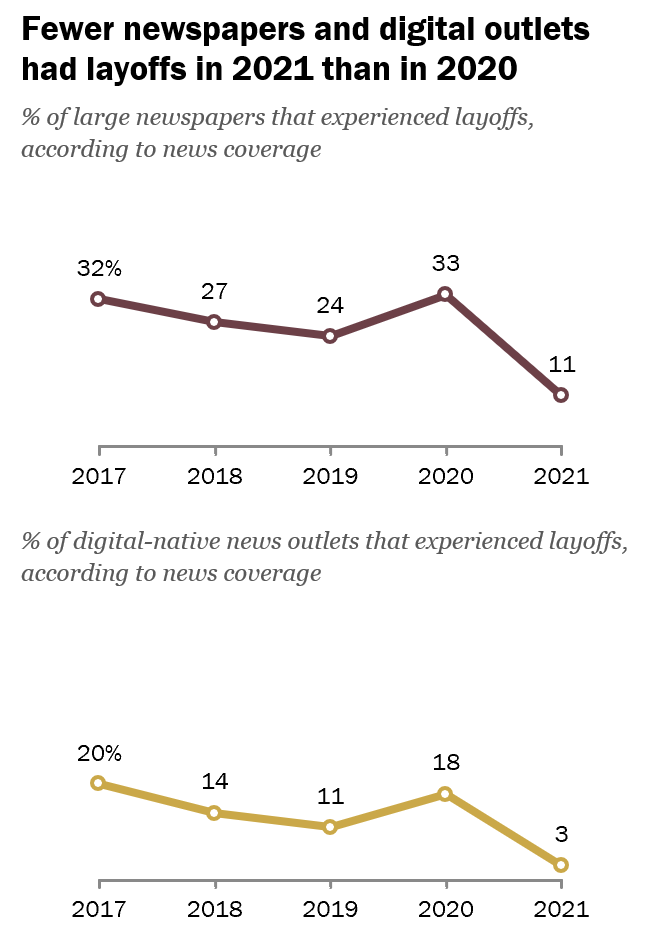In 2020, layoffs seemed to reach every corner of the news industry.
Legacy outlets like The Atlantic and The New York Times cut jobs. Newspaper chains implemented furloughs and gutted newsrooms. Neither alt-weeklies nor brand-new tech sites nor public radio stations nor award-winning magazines were immune. News industry folks used phrases like “extinction event.” It was pretty bleak, even for an industry familiar with terms like “restructuring” and “finding efficiencies” and “pivoting to video.”Things turned around in 2021, however, and not just compared to the disastrous 2020. In a new report, Pew Research Center finds that 2021 had the lowest percentage of layoffs at large U.S. newspapers and digital news sites since the center began tracking the trend in 2017.
In 2021, 11% of large newspapers faced layoffs and, among that group, none experienced more than one round of layoffs. In 2020 — you know, the year something we were calling the novel coronavirus sent shockwaves through the economy — 33% of newspapers cut jobs and 11% had multiple rounds of layoffs.
Pew researchers found a similar trend at high-traffic news sites, which they defined as digital-native outlets with at least 10 million unique visitors per month. (News orgs like Vice that made the traffic cutoff but launched with a print product were excluded from the survey.) Just 3% of digital news sites had layoffs in 2021, compared to 18% the year before.

The overall decline in circulation at U.S. newspapers may play a role in the decrease of publicly reported layoffs in 2021, Pew cautions. Only 73 newspapers met the threshold for inclusion — an average Sunday circulation of 50,000 or more — in 2021, compared to 110 in 2017. (Roughly the same number of digital-native news outlets have met Pew’s criteria year after year; the survey included 34 in 2021 compared to 35 in 2017.)
You can read Pew’s analysis here.
Leave a comment